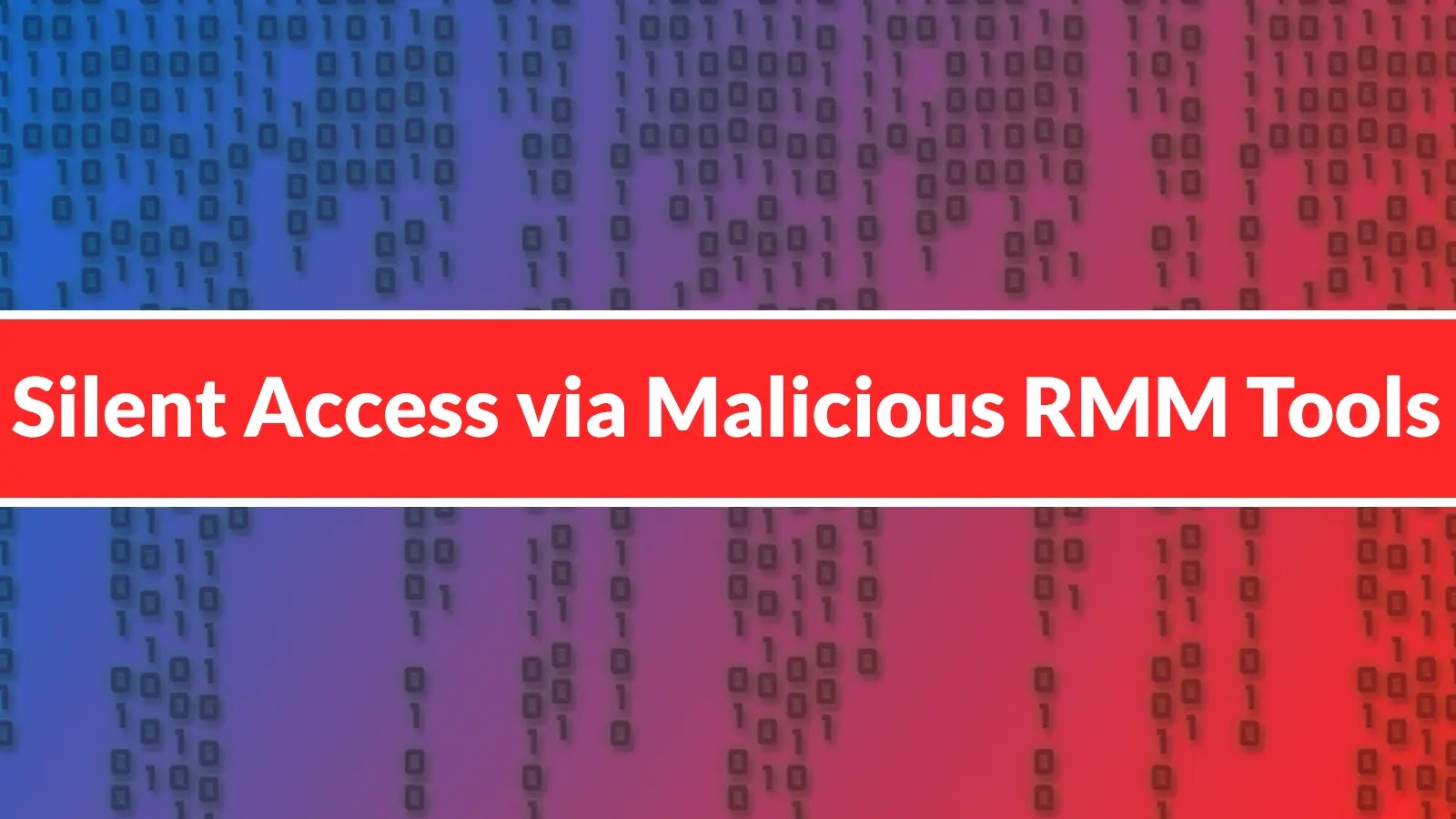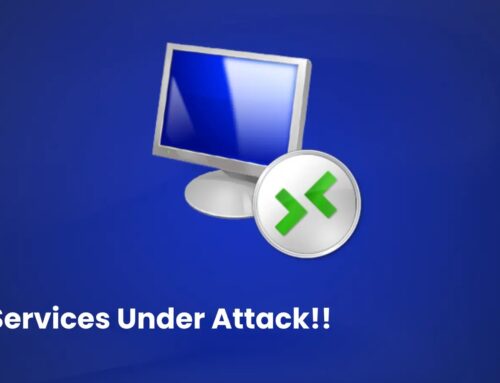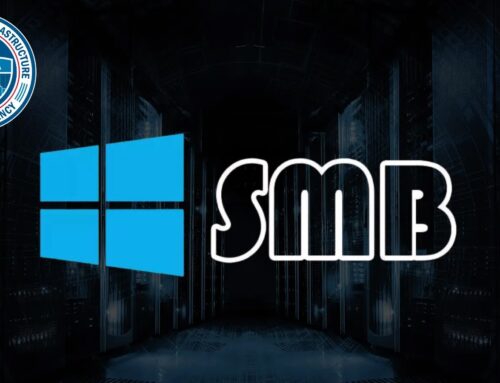
Threat Actors Embed Malicious RMM Tools to Gain Silent Initial Access to Organizations
Stealthy RMM Infiltrations: A Silent Threat Gaining Initial Access
The landscape of cyber threats is constantly evolving, with threat actors consistently developing novel techniques to bypass established security protocols. A particularly insidious campaign has recently emerged, leveraging legitimate Remote Monitoring and Management (RMM) tools to gain silent, initial access to organizational networks. This highly sophisticated approach poses a significant risk, especially to European organizations, demanding immediate attention and robust defensive strategies.
This tactic exploits a fundamental trust in commonly used IT administration tools, turning them into conduits for malicious activity. Understanding the mechanics of these RMM infiltrations is crucial for bolstering an organization’s defensive posture against what can be a devastating and difficult-to-detect attack.
The Deceptive RMM Attack Vector
Since November 2024, a notable cyber campaign has specifically targeted organizations, predominantly in France and Luxembourg. The attackers employ a highly effective social engineering tactic combined with technical ingenuity. They deliver carefully crafted PDF documents designed to appear innocuous, yet these documents contain embedded links that, once clicked, initiate the download and installation of legitimate RMM software.
This method circumvents traditional security measures such as email gateways and anti-malware solutions that are typically configured to flag suspicious executables or known malicious attachments. By leveraging legitimate software and a user’s unintentional action, the threat actors achieve a stealthy foothold within the target network.
Why RMM Tools are a Preferred Target
Remote Monitoring and Management (RMM) tools are indispensable in modern IT environments, enabling administrators to remotely manage, monitor, and troubleshoot systems across a network. Their inherent capabilities—remote access, system control, and often elevated privileges—make them incredibly attractive to threat actors. Once an attacker gains control of a legitimate RMM agent on a compromised machine, they effectively inherit these powerful capabilities, achieving silent and persistent access. This access allows them to:
- Maintain Persistence: RMM agents are designed to run continuously and connect back to a central server, providing a stable backdoor for the attackers.
- Bypass Network Defenses: Traffic from legitimate RMM tools is often whitelisted or considered benign by firewalls and intrusion detection systems, making it difficult to detect anomalous activity.
- Elevate Privileges: Many RMM solutions operate with system-level privileges, giving attackers extensive control over the compromised endpoint.
- Lateral Movement: With control over one RMM agent, attackers can often leverage the RMM’s capabilities to explore the network, discover other assets, and move laterally to other systems.
The Anatomy of the Attack: From PDF to Persistent Access
The attack chain for these RMM infiltrations can be summarized as follows:
- Initial Lure: Threat actors send sophisticated phishing emails or distribute malicious PDFs through other means. These PDFs are highly convincing and appear to be from legitimate sources.
- Embedded Link & Download: The PDF contains an embedded link, often camouflaged, that points to an RMM installer hosted on a compromised or actor-controlled server.
- User Execution: A user clicks the link, inadvertently downloading and executing the RMM installer. Because the software is legitimate, it often runs without raising immediate suspicion.
- Silent Installation: The RMM software installs, creating a persistent connection to the threat actor’s command and control (C2) infrastructure.
- Post-Exploitation Activity: Once the RMM agent is active, the threat actors can use it to perform reconnaissance, exfiltrate data, deploy additional malware, or establish further persistence.
The silent nature of this initial access is particularly concerning, as it allows attackers to establish a foothold and conduct reconnaissance for an extended period before being detected.
Remediation Actions and Proactive Defenses
Combating this threat requires a multi-layered approach, focusing on prevention, detection, and incident response. Organizations must prioritize the following actions:
- Enhance Email and Document Security:
- Implement advanced email filtering solutions capable of detecting malicious links within legitimate-looking emails.
- Configure email security gateways to scrutinize embedded links, even those within PDF attachments.
- Consider Sandboxing for suspicious attachments, opening them in an isolated environment before delivery.
- Strengthen Endpoint Detection and Response (EDR):
- Deploy robust EDR solutions that can monitor process execution, network connections, and file system changes for anomalous RMM activity, even if the RMM tool itself is legitimate.
- Configure EDR to alert on new or unusual RMM agent installations, especially on endpoints where RMM tools are not standard.
- Implement Application Whitelisting/Control:
- Restrict the execution of unauthorized applications. Allow only approved RMM tools to run on designated endpoints.
- For applications like RMM tools, ensure they are digitally signed and that only signed versions are permitted.
- Network Segmentation and Least Privilege:
- Segment networks to limit the blast radius of a potential compromise.
- Apply the principle of least privilege for RMM tools; ensure they only have the necessary permissions to perform their intended functions.
- User Awareness Training:
- Conduct continuous and engaging cybersecurity awareness training focused on identifying sophisticated phishing attempts and the dangers of clicking unknown links, even in seemingly legitimate documents.
- Emphasize the importance of verifying sender identities and being suspicious of unexpected document requests.
- Regular Security Audits:
- Perform regular audits of RMM tool usage and configurations.
- Monitor RMM logs for unusual login attempts, remote sessions, or commands executed.
Tools for Detection and Mitigation
| Tool Name | Purpose | Link |
|---|---|---|
| Microsoft Defender for Endpoint | EDR, network monitoring, device control | Microsoft Defender for Endpoint |
| CrowdStrike Falcon Insight | EDR, threat intelligence, continuous monitoring | CrowdStrike Falcon Insight |
| Proofpoint Email Security Gateway | Advanced email threat protection, URL defense | Proofpoint Email Security and Protection |
| Zscaler Zero Trust Exchange | Cloud security platform, secure web gateway, ZTNA | Zscaler Zero Trust Exchange |
| AppLocker (Windows OS) | Application whitelisting and control | AppLocker Documentation |
Conclusion: Fortifying Defenses Against Evolving Threats
The emergence of threat actors leveraging legitimate RMM tools for initial access underscores a critical shift in attack methodologies. Organizations can no longer solely rely on traditional signature-based detection. A proactive and adaptive security posture, characterized by robust endpoint protection, stringent application controls, strong network segmentation, and continuous user education, is paramount. By understanding the threat and implementing comprehensive defenses, enterprises can significantly reduce their susceptibility to these stealthy and impactful RMM incursions, safeguarding their digital assets and critical operations.





